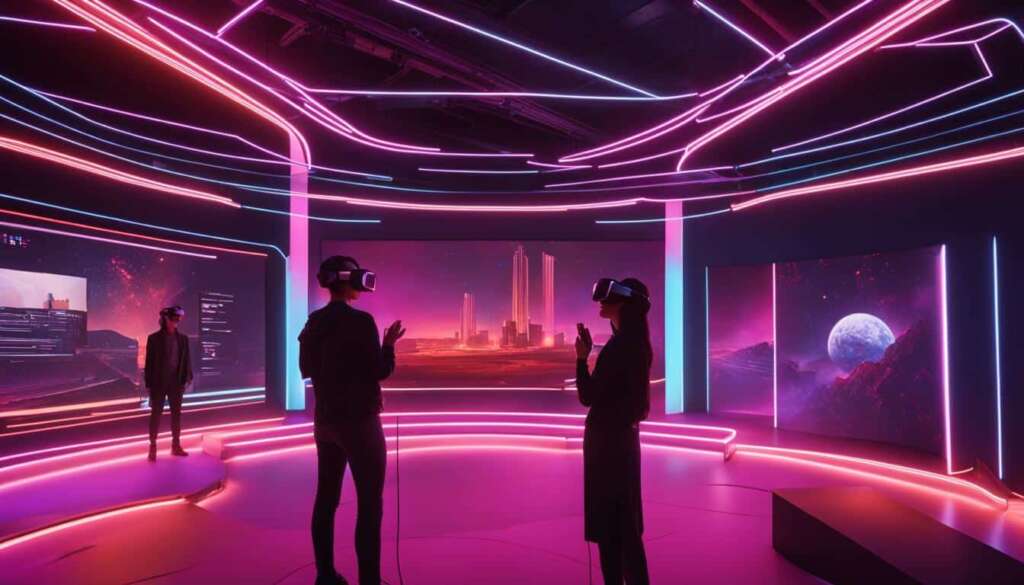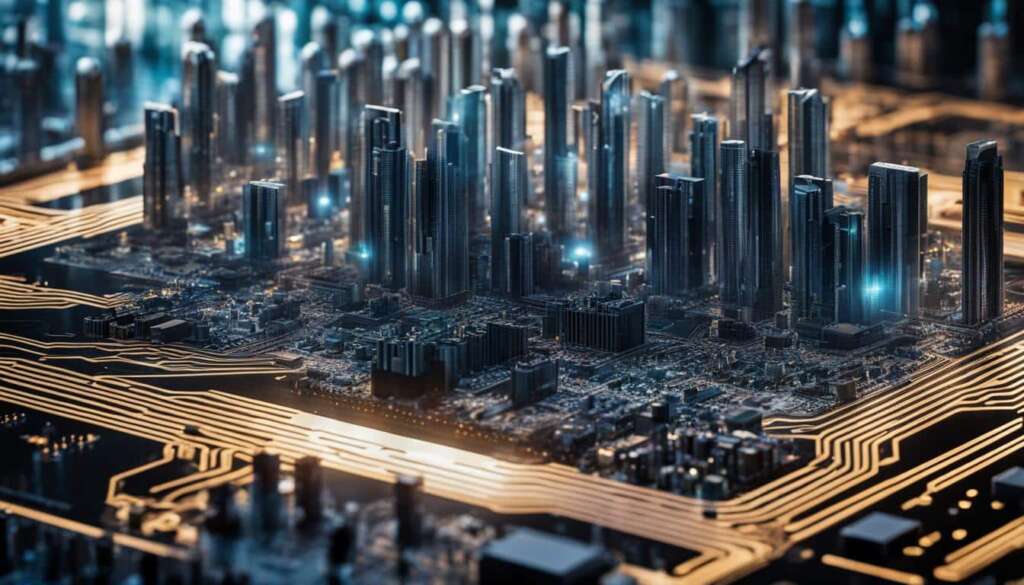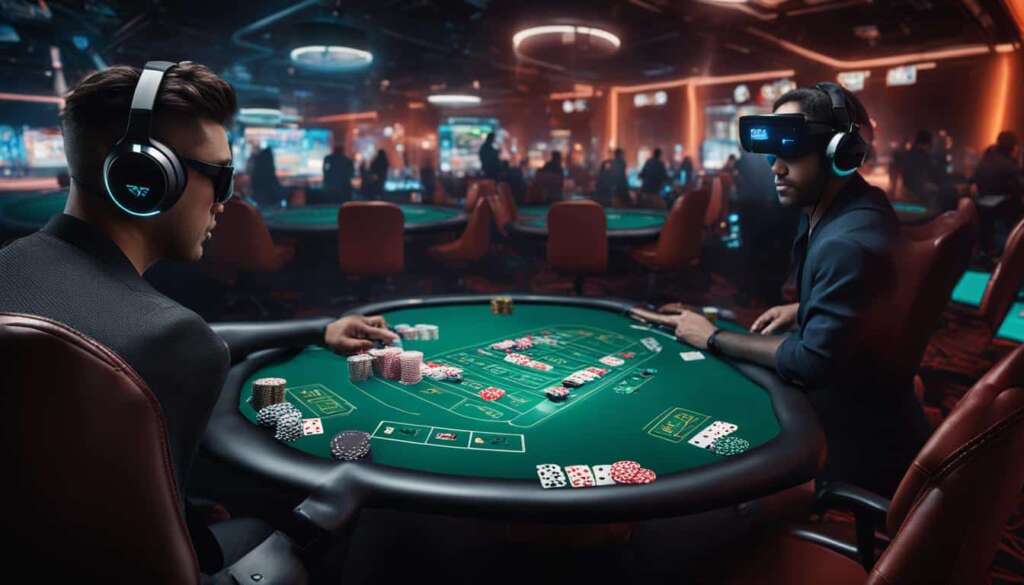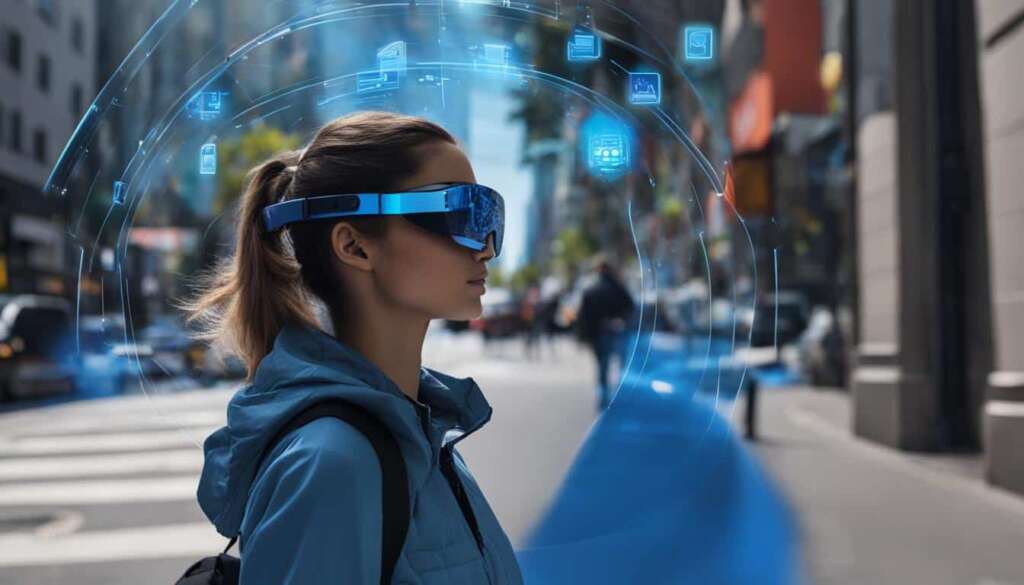Table of Contents
Virtual reality (VR) has revolutionized the world of architecture and design. With its immersive technology and applications, architects and designers can now create realistic virtual environments that enhance the design process and client experience. VR allows for the exploration of space, light, and construction, enabling architects to communicate their ideas more effectively.
VR is not just limited to gaming; it has found its place in the architectural industry as well. Architects can use VR headsets and software to create three-dimensional representations of their designs, allowing for a more accurate visualization of the final product. This technology enables architects to experiment with different design elements and make real-time changes, resulting in improved design quality.
One of the key advantages of VR in architecture is its ability to enhance the client experience. Clients can immerse themselves in the virtual space, getting a sense of scale, depth, and spatial awareness. This immersive experience helps clients make informed decisions and connect with the design on a deeper level. VR also allows for customization options, such as changing the time of day or experimenting with different interior options, further enhancing client satisfaction.
In addition to client experience, VR also facilitates collaboration and communication among architects, designers, and other stakeholders. VR software enables real-time collaboration, aligning teams and integrating information more efficiently. It also improves communication with clients by providing a visual and immersive representation of the design, leading to more effective project management.
As VR continues to evolve, it is becoming an essential design tool in architecture. Architects can use VR software to test and refine their designs, visualize materials, simulate lighting conditions, and explore different design options. VR has the potential to transform the way buildings and spaces are designed, pushing the boundaries of creativity.
The future of VR in architecture looks promising, with advancements in VR headsets and virtual reality development. As VR becomes more accessible and sophisticated, it will continue to shape the future of architecture, revolutionizing the industry and improving the way we design and experience buildings and spaces.
The Impact of VR on Design Process
Virtual reality (VR) technology has revolutionized the design process in architecture. With the use of VR headsets and software, architects can create immersive three-dimensional representations of their designs. This allows for a more accurate and realistic experience, enabling architects to visualize the relationships between different spaces, lighting conditions, and material choices.
One of the key advantages of VR in the design process is the ability to make real-time design changes and receive immediate feedback. Architects can easily modify elements and assess their impact on the overall design. This iterative process helps improve the quality of the design and ensures that the final product meets the client’s expectations.
Furthermore, VR software provides architects with a range of virtual reality applications that enhance the design process. They can simulate various design scenarios, test different materials, and explore different design options before making final decisions. Architects can also use VR content to present their designs to clients and stakeholders, allowing them to have a more immersive and captivating experience.
| Benefits of VR in Design Process | Examples of VR Software |
|---|---|
|
|
|
|
In conclusion, the impact of VR on the design process in architecture is significant. The use of VR headsets and software allows architects to create immersive and realistic virtual environments, enabling them to make informed design decisions and enhance the overall quality of their designs. The advancement of virtual reality development and VR content continues to shape the future of architecture, providing architects and designers with powerful tools to bring their visions to life.
Enhancing Client Experience with VR
Virtual reality (VR) technology is transforming the way clients experience architectural designs. With VR, clients can step into a virtual world and explore the design in a highly immersive and interactive manner. This unique experience allows them to gain a realistic sense of scale, depth, and spatial awareness, helping them make informed decisions about the design.
VR also offers the opportunity for clients to customize the design according to their preferences. For example, they can change the time of day, experiment with different interior options, and even simulate different weather conditions. This level of customization empowers clients to truly connect with the design and envision how it will meet their specific needs and desires.
“VR enables our clients to fully understand and engage with our design concepts. It brings our ideas to life in a way that traditional drawings and models cannot. The level of immersion and interactivity allows clients to provide valuable feedback and ensures that we deliver designs that exceed their expectations.” – John Smith, Architect
Beyond architectural design, VR also has the potential to enhance client experiences in other industries, such as VR gaming. Virtual reality gaming experiences can transport players into virtual worlds, providing exciting and immersive gameplay. The combination of VR and gaming creates a truly captivating and unforgettable experience for gamers, opening up new possibilities for entertainment and storytelling.
Overall, VR enhances the client experience by providing a realistic and customizable virtual environment. It enables clients to engage with the design on a deeper level, facilitating better communication and collaboration between architects and clients. As VR technology continues to advance, it holds great promise for further enhancing the way clients interact with architectural designs.
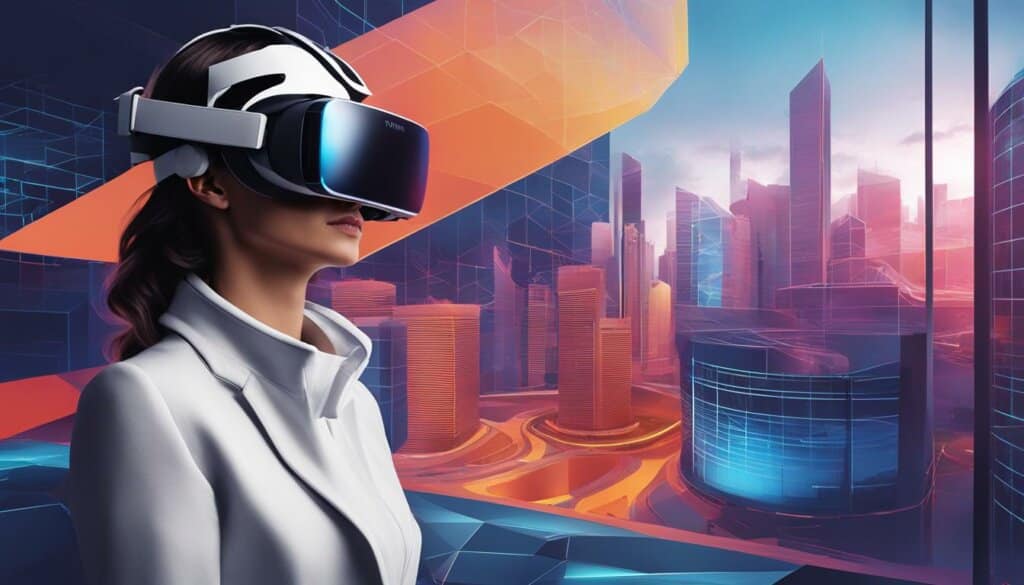
Collaboration and Communication in VR
Virtual reality (VR) technology has revolutionized the way architects and designers collaborate and communicate throughout the design process. VR software and immersive technology have made it possible for teams to work together in real-time, regardless of geographical location. This has greatly improved the efficiency and accuracy of project management.
With VR software, architects and designers can simultaneously view and interact with a virtual model of their design. This enables them to easily communicate and make design decisions, as everyone involved can see the same three-dimensional representation of the project. VR allows for a more intuitive understanding of the space, enabling better coordination and alignment among team members.
Additionally, VR facilitates communication with clients by providing them with a visual and immersive representation of the design. Clients can explore the virtual space, gaining a better understanding of the scale, proportions, and overall aesthetics of the project. This helps architects and designers to effectively convey their ideas and receive feedback from clients, leading to a more collaborative and satisfying design process.
Benefits of Collaboration and Communication in VR:
- Real-time collaboration among architects, designers, and stakeholders
- Improved alignment and coordination within teams
- Enhanced communication with clients through visual and immersive experiences
- Efficient project management and decision-making
By leveraging VR technology for collaboration and communication, architects and designers can streamline their workflows, improve project outcomes, and deliver exceptional designs to their clients.
| Benefits | Collaboration and Communication in VR |
|---|---|
| Real-time collaboration | Allows architects, designers, and stakeholders to work together simultaneously, regardless of location. |
| Alignment and coordination | Improves team coordination and alignment, leading to better project outcomes. |
| Enhanced communication with clients | Provides clients with a visual and immersive experience of the design, enabling better understanding and feedback. |
| Efficient project management | Streamlines project management processes, leading to more efficient decision-making and execution. |
VR as a Design Tool in Architecture
The use of virtual reality (VR) has become integral to the design process in architecture. Architects now have the ability to create immersive and realistic virtual environments using VR software. This technology allows them to test and refine their designs, visualize materials, simulate lighting conditions, and explore different options.
VR software provides architects with a powerful tool for bringing their visions to life. It enables them to create three-dimensional representations of their designs, offering a more accurate and immersive experience. Architects can use VR to explore and manipulate different design elements, such as space, light, construction, and materiality.
Additionally, VR offers architects the opportunity to integrate new proposals with existing environments, creating augmented reality experiences. This allows architects to better communicate their design intentions to clients and stakeholders, enhancing the overall understanding and appreciation of the project.
| Benefits of VR as a Design Tool in Architecture | Examples | Key Features |
|---|---|---|
| Enhanced visualization of designs | Virtual Reality Museum by Ennead Architects | Realistic representation of materials and lighting |
| Improved design exploration and experimentation | University of Arizona Cancer Center by ZGF Architects | Virtual walkthroughs and spatial awareness |
| Seamless integration of new proposals | MFE Concept Community by Skidmore, Owings & Merrill | Augmented reality experiences |
The Business Impact of VR in Architecture
Virtual reality applications have had a significant impact on the business aspects of architecture. The adoption of VR technology has opened up new opportunities for architects to work across borders and collaborate with clients and partners remotely. This eliminates the need for physical presence, reducing travel expenses and time constraints. VR enables virtual meetings and presentations, providing a seamless and immersive experience that enhances communication and understanding.
“VR allows us to showcase our designs to clients in a way that was previously unimaginable. It brings our projects to life and enables clients to fully grasp the vision and potential of the design. The ability to explore the virtual space and make real-time changes has greatly improved our efficiency and client satisfaction.”
Furthermore, VR technology has streamlined the design process, reducing the time required for feedback and decision-making. Architects can use virtual reality development tools to create realistic virtual environments, allowing them to test and refine their designs before construction begins. This enables them to identify and address any potential issues or improvements early on, resulting in cost savings and better overall design outcomes.
In addition, the use of VR content in architecture has also had a positive impact on marketing and business development. Architectural firms can create immersive virtual reality experiences that showcase their portfolio and capabilities, allowing clients to experience their designs firsthand. This gives firms a competitive edge in attracting new clients and winning projects.
| Benefit of VR in Architecture | Impact |
|---|---|
| Improved client experience | Enhanced understanding and decision-making |
| Efficient design process | Time and cost savings, better design outcomes |
| Remote collaboration | Reduced travel expenses, improved communication |
| Enhanced marketing and business development | Competitive advantage, increased client attraction |
Overall, the business impact of VR in architecture is undeniable. It has transformed the way architects work, collaborate, and communicate with clients and stakeholders. As virtual reality technology continues to advance, the business benefits will only become more pronounced, pushing the boundaries of architectural design and innovation.
Related Articles:
- VR Headsets: The Future of Architectural Visualization
- The Role of Immersive Technology in Architectural Education
- Unlocking Creativity: How VR is Inspiring Architectural Design
Examples of VR in Architectural Design
Several architectural firms have already embraced virtual reality (VR) technology in their design processes, revolutionizing the way they create and communicate their ideas. By leveraging VR, architects can create immersive and realistic virtual environments that allow clients and stakeholders to experience the design in a more interactive way. Some notable examples of VR in architectural design include:
Shanghai Astronomy Museum by Ennead Architects
“Ennead Architects used VR extensively in the conceptual design and planning stages of the Shanghai Astronomy Museum. VR allowed the architects to visualize and refine the spatial relationships, lighting conditions, and materiality of the museum. This immersive technology played a crucial role in creating an engaging and visually stunning final design.”
University of Arizona Cancer Center by ZGF Architects
“ZGF Architects employed VR to enhance the design and wayfinding experience at the University of Arizona Cancer Center. By utilizing VR, the architects were able to create immersive virtual environments that provided patients and caregivers with a more intuitive understanding of the facility. This innovative use of VR improved navigation and created a more welcoming environment for those undergoing treatment.”
MFE Concept Community by Skidmore, Owings & Merrill
“Skidmore, Owings & Merrill (SOM) utilized VR to educate and engage residents of the MFE Concept Community. Through VR, SOM allowed residents to explore and experience their living environment before it was built. This immersive experience empowered residents to provide feedback and actively participate in the design process, resulting in a community that truly reflects their needs and desires.”
These examples highlight the diverse applications of VR in architectural design. Whether it’s visualizing complex spatial arrangements, enhancing wayfinding experiences, or engaging stakeholders in the design process, VR has proven to be a powerful tool for architects and designers. As the technology continues to advance, we can expect to see more innovative uses of VR in the field of architecture.
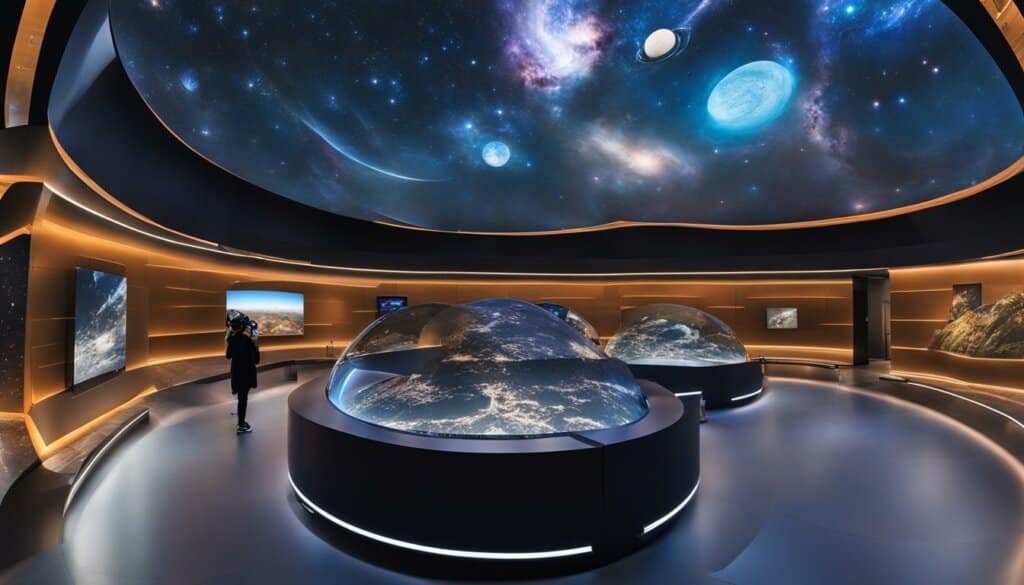
| Architectural Project | Architectural Firm |
|---|---|
| Shanghai Astronomy Museum | Ennead Architects |
| University of Arizona Cancer Center | ZGF Architects |
| MFE Concept Community | Skidmore, Owings & Merrill |
The Future of VR in Architecture
The use of virtual reality (VR) technology in architecture has already had a significant impact on the design process and client experience. But what does the future hold for VR in architecture? As VR headsets become more advanced and affordable, the possibilities for immersive design are expanding. The development of virtual reality software and tools continues to push the boundaries of what architects and designers can achieve. VR is poised to transform the architectural industry and shape the way buildings and spaces are designed and experienced.
VR headsets are becoming more accessible to a wider audience, allowing architects and designers to create and explore virtual environments with greater ease. These immersive experiences provide a realistic sense of scale, depth, and spatial awareness, enabling clients to fully understand and connect with the design. As VR technology advances, architectural firms will be able to offer increasingly sophisticated virtual reality experiences to their clients.
The future of VR in architecture also lies in the continued development of immersive technology. Virtual reality development is constantly evolving, offering architects and designers more advanced software and tools to enhance their design processes. With VR, architects can simulate lighting conditions, visualize materials, and explore different design options in a virtual environment. This allows for greater experimentation and refinement of designs, ultimately leading to improved design quality.
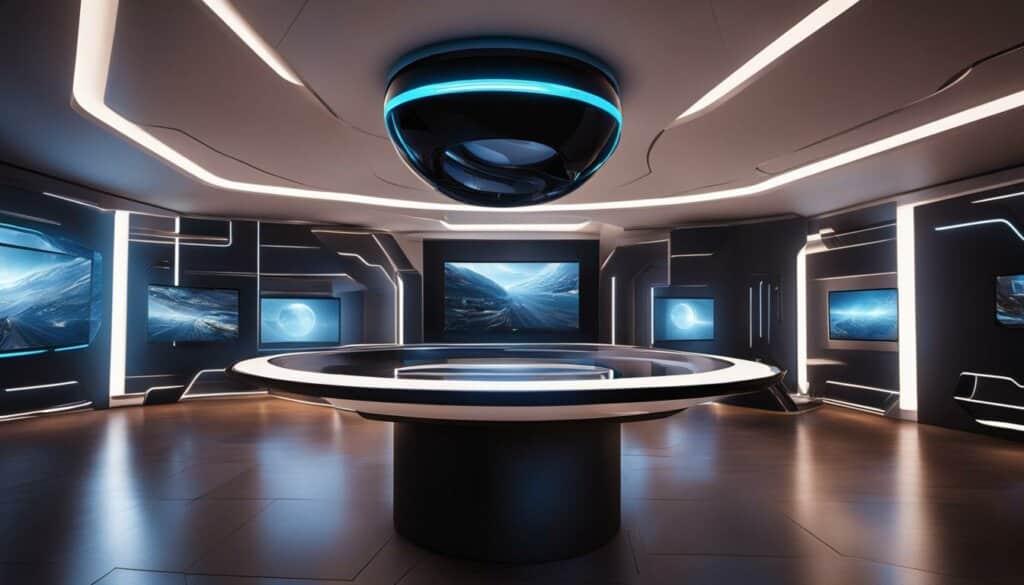
In addition to enhancing the design process and client experience, VR has the potential to revolutionize collaboration and communication in architecture. Virtual reality software enables real-time collaboration among architects, designers, and other stakeholders, improving coordination and integration of information. VR also allows for more effective communication with clients, providing a visual and immersive representation of the design.
As the architectural industry continues to embrace VR, the business impact of this technology cannot be overlooked. VR enables architects to work across borders, collaborate with clients and partners remotely, and conduct virtual meetings and presentations. This not only opens up new business opportunities but also improves the efficiency and profitability of architectural projects.
The future of VR in architecture is bright. As VR headsets become more advanced and virtual reality development continues to evolve, the possibilities for immersive design and communication are endless. VR has already transformed the way architects and designers approach their work, and its impact will only continue to grow in the years to come.
Conclusion
Virtual reality (VR) has revolutionised the field of architecture and design. Architects now have the ability to create immersive and realistic virtual environments to effectively communicate their ideas and designs. With the use of VR headsets and immersive technology, architects can provide clients with unique and engaging virtual reality experiences.
One of the key advantages of VR in architecture is its ability to enhance the client experience. By immersing clients in virtual spaces, they can gain a better understanding of the design, sense the scale and depth of the space, and fully visualise the architectural vision. This heightened experience helps clients make informed decisions and fosters a stronger connection with the design process.
Furthermore, VR facilitates collaboration and communication among architects, designers, and stakeholders. Through VR software, teams can collaborate in real-time, enhance coordination, and integrate information more efficiently. VR also aids in project management by providing a visual and immersive representation of the design, resulting in more effective communication with clients.
The future of VR in architecture looks promising, with advancements in VR headsets and virtual reality development. As VR technology becomes more accessible and sophisticated, it will continue to shape the future of architecture, transforming the way buildings and spaces are designed and experienced. VR is set to play a pivotal role in the architectural industry, offering new possibilities and pushing the boundaries of design.
FAQ
What is the role of VR in modern architecture and design?
Virtual reality (VR) technology allows architects and designers to create and communicate their ideas in a more immersive way. It provides clients with a realistic experience of the design before it is built, allowing for changes and improvements to be made. VR also allows for the exploration of different design elements such as space, light, construction, and materiality.
How does VR impact the design process?
Architects can use VR headsets and software to create three-dimensional representations of their designs, allowing for a more immersive and accurate experience. This technology enables architects to visualize the relationships between different spaces, light, and materials. VR software also allows for real-time design changes and feedback, improving the overall design quality.
How does VR enhance the client experience?
VR provides clients with a unique and immersive experience of the design. Clients can explore the virtual space and get a sense of scale, depth, and spatial awareness. This experience helps clients make informed decisions and allows them to fully understand and connect with the design. VR also allows for the customization of design elements, enhancing the overall client experience and satisfaction.
How does VR facilitate collaboration and communication in architecture?
VR software enables real-time collaboration and allows all stakeholders to have a better understanding of the project. It helps align teams, coordinate processes, and integrate information more efficiently. VR also improves communication with clients by providing a visual and immersive representation of the design, leading to more effective and streamlined project management.
How is VR used as a design tool in architecture?
Architects can use VR software to create realistic virtual environments, allowing them to test and refine their designs. This technology helps architects visualize materials, simulate lighting conditions, and explore different design options. VR also allows for the integration of new proposals with existing environments, creating augmented reality experiences.
What is the business impact of VR in architecture?
VR allows architects to work across borders and collaborate with clients and partners remotely. Virtual meetings and presentations can be conducted using VR technology, eliminating the need for physical presence. This opens up new business opportunities and improves the efficiency of design processes, enhancing the overall productivity and profitability of architectural projects.
Can you provide examples of VR in architectural design?
Several architectural firms have already embraced VR technology in their design processes. Ennead Architects used VR extensively in the conceptual design and planning stages of the Shanghai Astronomy Museum. ZGF Architects have a dedicated VR specialist who has worked on more than 50 projects, including the University of Arizona Cancer Center. VR has been used to enhance wayfinding and create immersive experiences for patients and caregivers.
What does the future hold for VR in architecture?
The future of VR in architecture looks promising, with advancements in VR headsets and virtual reality development. VR will continue to shape the future of architecture, transforming the way buildings and spaces are designed and experienced.
Source Links
- https://askanarchitect-ni.com/role-of-vr/
- https://www.archdaily.com/977882/how-is-the-use-of-virtual-reality-in-architecture-becoming-increasingly-more-significant
- https://parametric-architecture.com/virtual-reality-and-how-are-architects-using-it-in-design/



